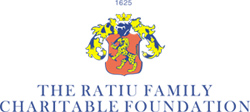UCL School of Slavonic and East European Studies, University College London, 7th Annual International Postgraduate Conference
Inclusion Exclusion
Saturday 18 February 12:00 – 1:30: Panel J4: Music, Culture, and Nationhood
Marija Grujić (Central European University): ‘Inclusiveness of the ‘turbo folk music’ scene in post-Communist Serbia: transgression of cultural boundaries or a new model of cultural exclusions?’
The paper deals with turbo folk music scene in Serbia, usually viewed as one of the most remarkable results of cultural changes in post-communist period in the Balkans. Turbo folk music is a term used mostly in Serbia and refers to a popular music genre which combines so-called western sound and the elements of southern and eastern ethno music. A number of popular culture theoreticians perceive music genre as an important symptom of the beginning of post-communist era, especially in the Balkans, which has been setting a new cultural paradigms in this part of Europe.
So far, there have been a lot of debates on the broader social significance of the rapid commercial success and media visibility of this music genre. On the one hand, turbo folk is often seen a cultural expression that goes beyond the cultural boundaries placed in communist times in popular culture, as a genre transgressing the line between "high" and "low", combining the elements of "urban" and "rural", and putting together the elements of "western" and "eastern" cultural icons and even particular diverse cultural identities (suburban cultures, cultures of urban ghettos, gay culture etc). On the other hand, turbo folk music scene is also often criticized for its tendency to glorify the ideology of over-luxurious life, for its promotion of shallow, pornographic contents and its connections with the ideology of nationalist, aggressive, collectivist and discriminative spirit.
In this paper, I aim to analyze these two views at turbo folk culture, in order to explain what makes turbo folk subjected to both of these interpretations. I will argue that these two ways of interpreting this genre are both valid, with certain limitations, as they refer to the two sides of turbo folk scene which coexist and don’t exclude each other. I will also try to explain why the social and cultural changes in Eastern Europe enable turbo folk culture both to include and discriminate particular cultural concepts and scenes. In addition, I will discuss the ways in which the transgression of cultural boundaries can lead into the domination of a particular social identity and discrimination of the other ones in the context of post-communist cultural changes.




